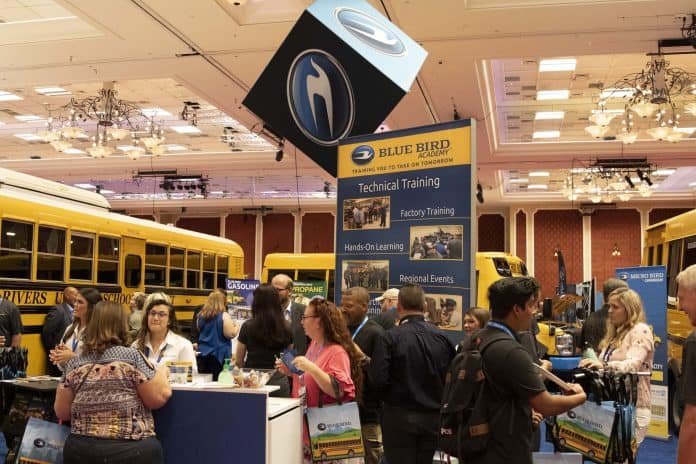How do we develop leaders? Generally, the people we choose to lead are the ones who have done well in the job they are in, or they know the most about how to do what they do.
Maybe they are the best driver, the best mechanic or the best router. We assume they can jump right into the role of leading the team for which they have excelled at doing the job, maybe even throwing them in to lead another group with similar skill sets.
This sounds like the perfect plan, doesn’t it? They will not only know how to do the job but also have the credibility to show others how to do it. Unfortunately, we are setting them and our organization up for potential disaster.
Why? Leadership skills are different than job-specific skills. Maybe, just maybe, we give them a good book to read or we set them up for an hour-long webinar. What is the solution?
In manufacturing, service or any other industry, we are always depleting our natural resources and our products. We work diligently every day to find ways to make a better and more cost-effective school bus or product.
We look for ways to increase the safety of our precious cargo with new technology and higher standards of vehicle operation. While we are in the business to make money and build safer products, we may be ignoring the most valuable resource we have: Our people.
This is the only resource we have that should improve over time. Unlike a vehicle that devalues when it is driven off the dealer lot, our people should continue to improve from the moment we onboard them.
How much time do we spend doing the same for our employees, researching how we can improve their quality and worth, safety, value and retention? If we focus on growing our human resources, the end result will be safer, quality products and a place that attracts those who want to work and to grow. This starts with developing and growing our leaders.
Here are my top 5 requirements for setting up a leadership development program:
1. It begins with a commitment from the top down. This year, Blue Bird Academy rolled out its “Advancing Leaders” initiative, beginning at the ground floor for our frontline leaders. Of course, we have complete buy-in from our executives on down. Without this support, the program will fail. The best scenario is to have the execs take the course at a high level and touch on the objectives. That way, they can “speak the speak,” “walk the walk” and support the time away from the job it will take to move leaders through the program.
2. Internal marketing. It is imperative to get people excited about the program. Talk it up at town hall meetings and set up a communication board to highlight what is being done. Tell success stories about the training. Most importantly, let them know how much they are valued by the organization. Ask for their help in developing themselves by conducting surveys and interviews, or by simply having a conversation about what is coming. Create a newsletter and videos, tell stories, and by all means, make it fun. Our Blue Bird Academy team walks through the plant on a daily basis, not only keeping employees excited about the program, but also offering support and reminders of the skills that have already been learned and the next ones to be developed.
3. Don’t make it a “one and done” leadership skills class. Most successful initiatives last for more than one week of immersion, into the latest buzz words of leadership. This works for learning a language, but not the application of leadership skills, if you want them to “stick.” Our initial program is planned for a two-year learning path. We have groups come in for a four-hour workshop, where they look into real-life, real-time scenarios and situations that they can immediately apply on the job. Three months later, we bring them back to discuss and build on the previous sessions. This is a great opportunity to see how they may have applied the principles that were learned. Review whether they found success, made changes to meet the needs of their team or struggled with the concepts. Here’s the best part—they will learn from each other and they will grow stronger as a leadership team.
4. Don’t forget the soft skills. I have always been amazed at how much training on soft skills is viewed as unimportant in developing people. We send them to train to learn their skill of welding, maintenance, how to use specific tools, drive the bus and how to sell. These are vital, too. But it is important that we teach our people how to relate to others, especially those they lead. In our first course, we start with simple-sounding things, like praise, constructive feedback and listening skills. You’d be surprised at how few people actually know how to give proper praise or positive feedback. Once we get through the basics, we have a foundation from which to build strong, cohesive leadership teams, which result in more valued resources.
5. Follow up and reinforce. Finally, we always reassess and check for application on the job. Be available to your candidates for reinforcement, support and observation of skills transfer. We don’t ask, “How’s it going?” We observe, and ask specific questions related to training and even ask their team members if they have noticed a difference.
With many years of experience working to help companies cultivate their most valuable resource, no matter the industry, there is still so much more work to do. Culture can be changed, but as with any endeavor, it takes the commitment that starts at the top, with support all the way through the company.
There are plenty of examples today of companies that put their people first, and it shows on their bottom line as well as through higher retention rates, lower absenteeism and engaged employees.
In the school bus transportation business, because of what we do and who we serve, we have a commitment to safety and quality for our end users. It is on this foundation that we can rely on to leverage the desire to continually become better for our people.

Carol is the director of corporate training and technical publications for Blue Bird Corp. She has three decades of experience in organizational leadership and development training. She has also authored two books and many articles on employee management.

















